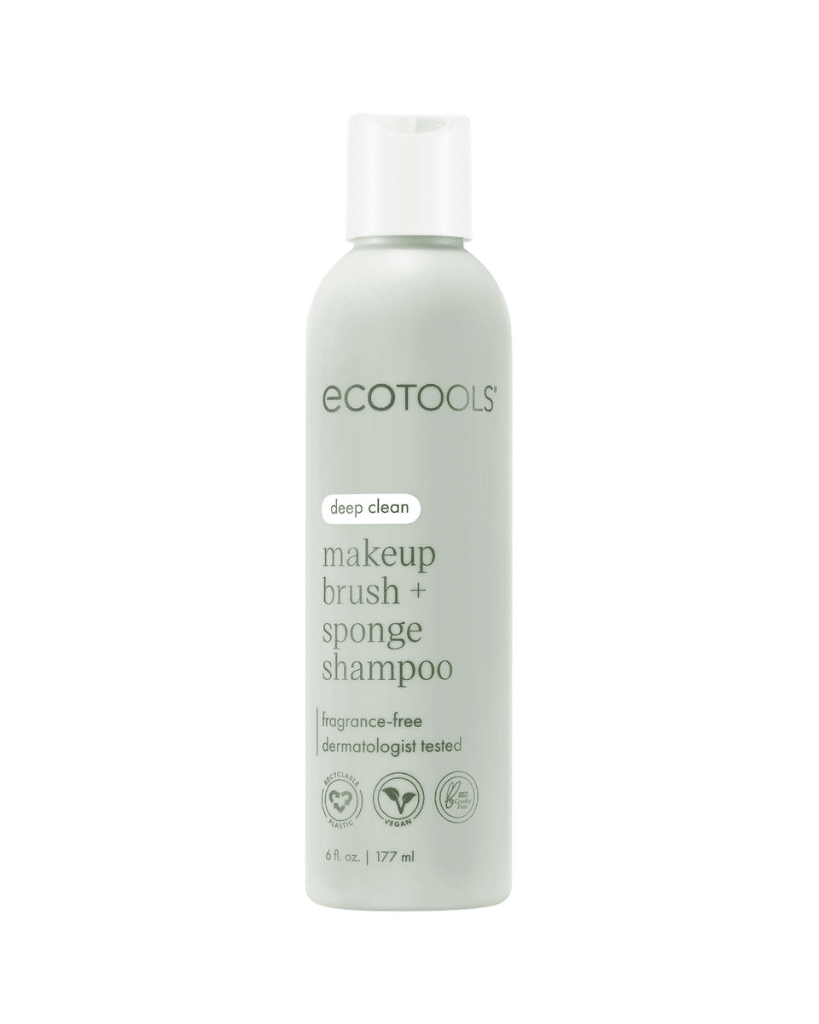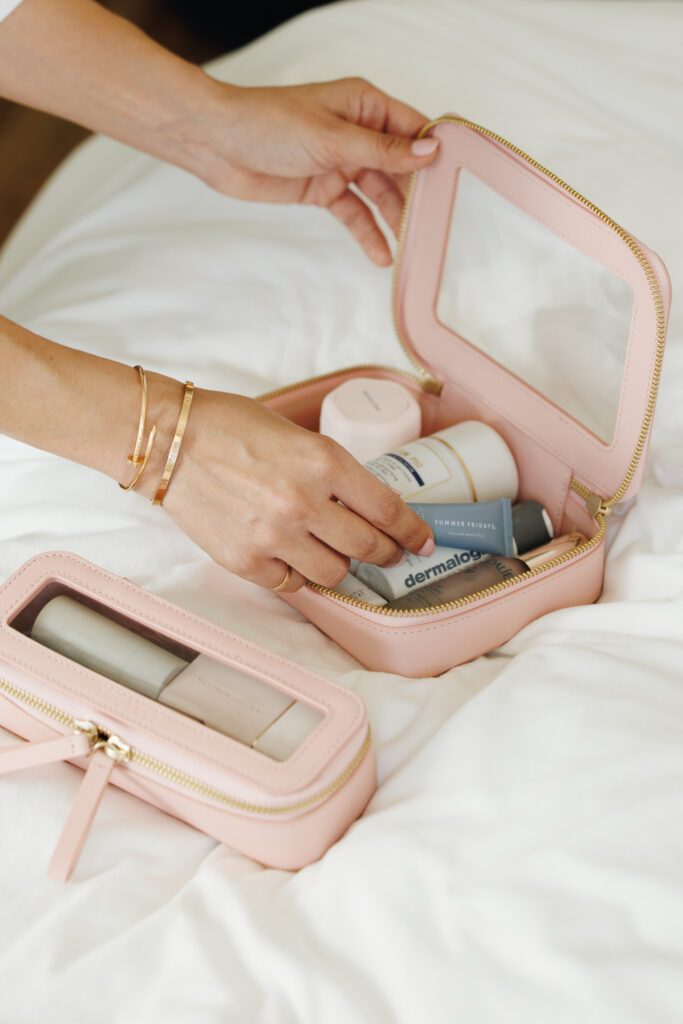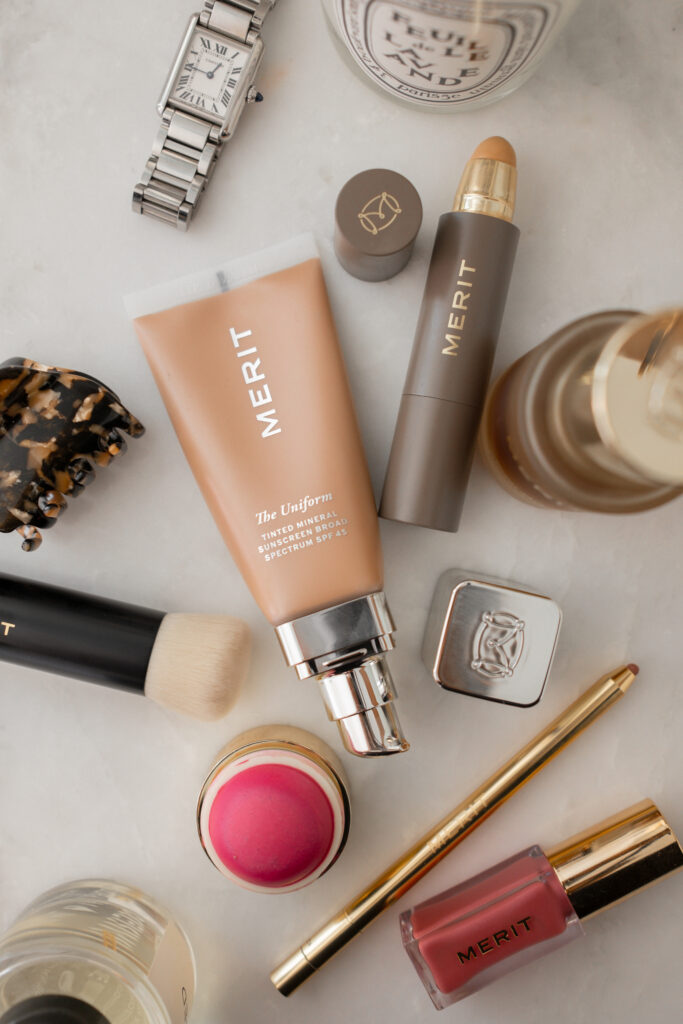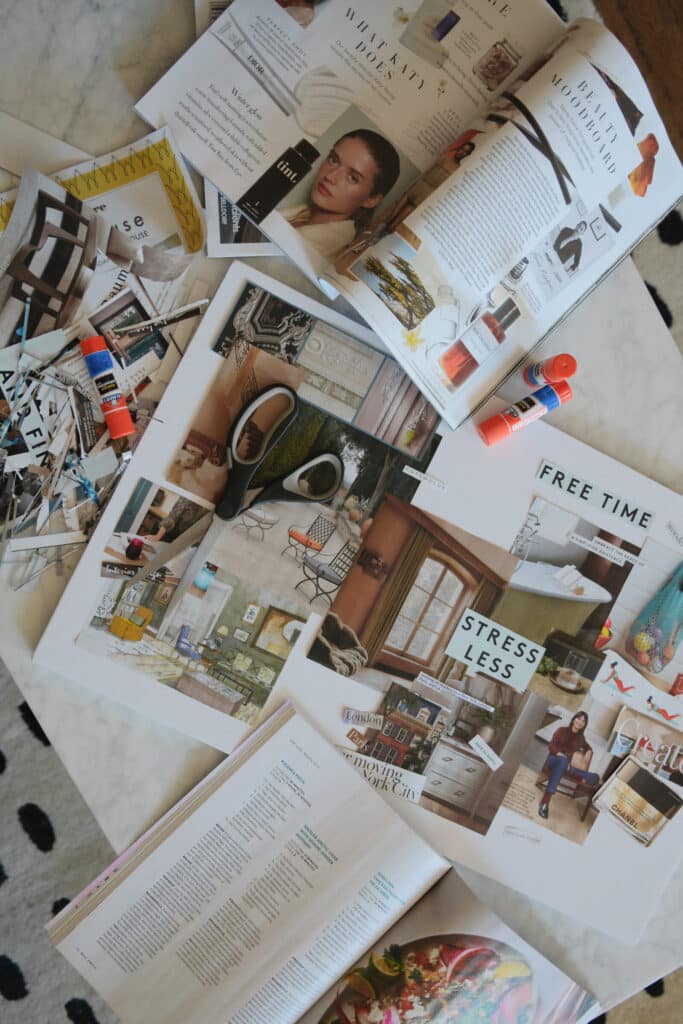When is the last time you cleaned your makeup brushes and sponges?
Makeup brushes and sponges are essential in any beauty routine, as they help to apply and blend your makeup seamless. But when they’re dirty and aren’t regularly cleaned, can wreak move havoc on your skin and do more damage than good.
Cleaning your sponges and makeup brushes regularly helps keep them in shape and extends their lifespan, but most importantly, prevents gross bacteria from landing on your skin and causing breakouts or further infections.
If you can’t remember the last time you cleaned your makeup brushes and sponges, or you’re starting to see odd breakouts, it’s time to head to your sink.
Here’s a full guide on how to properly clean your makeup sponges and brushes.
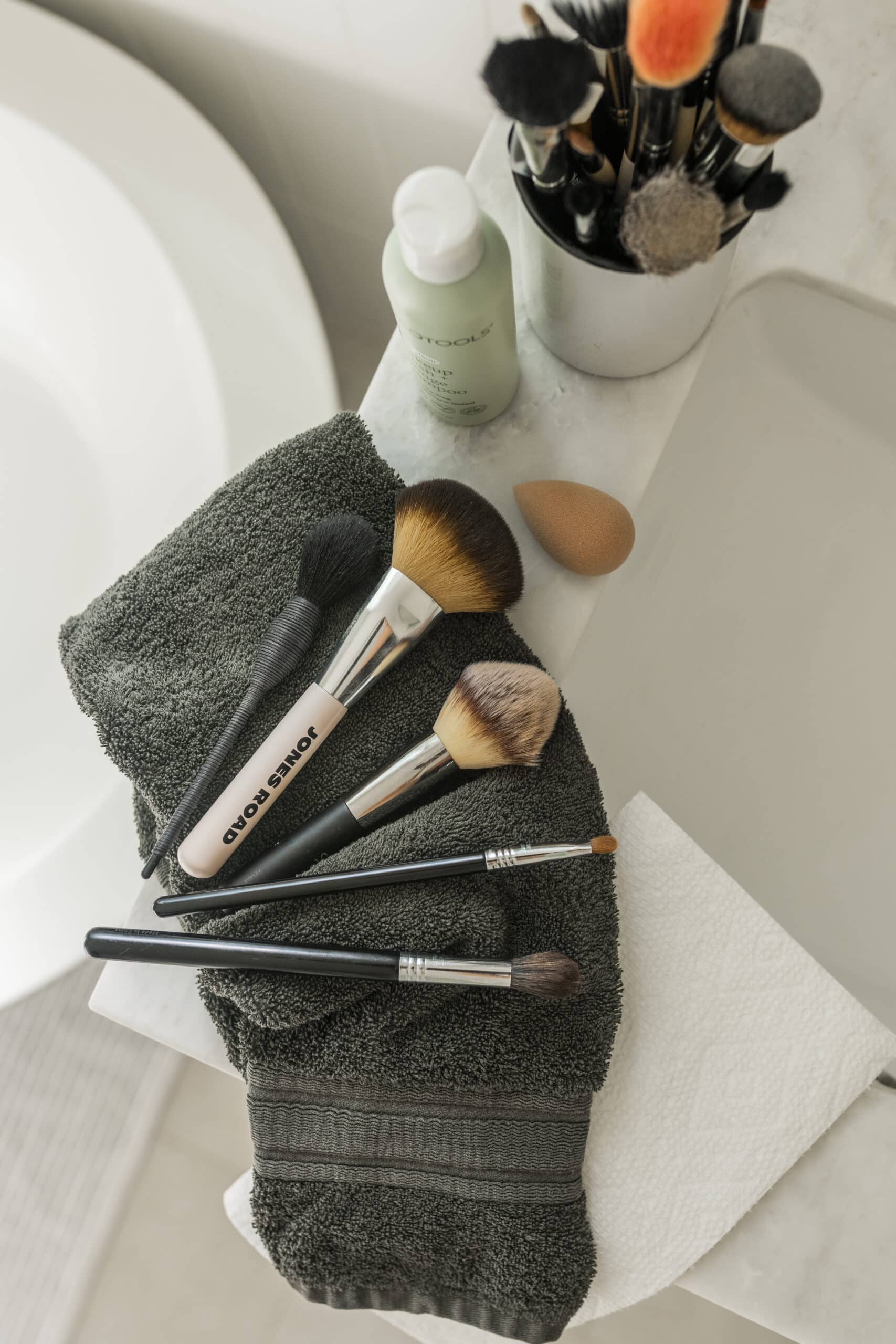
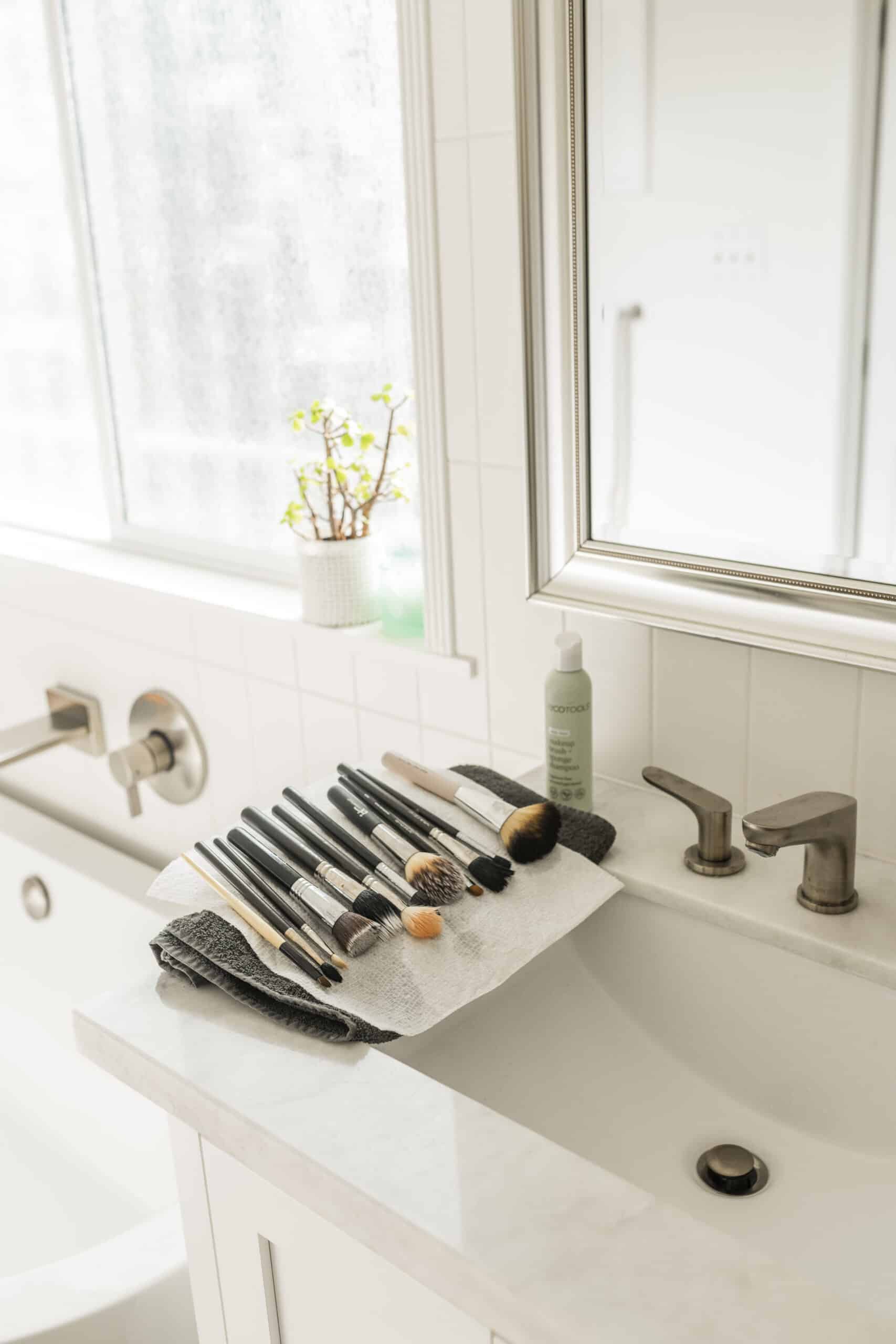

How to Clean Makeup Sponges and Brushes
Cleaning your makeup brushes and sponges should be a part of your regular beauty routine and cleaning them is crucial for maintaining healthy skin.
Over time, makeup brushes accumulate oil, dirt, dust, product build up, and dead skin cells. Dirty makeup brushes can lead to not just breakouts and irritation, but fungal infections due to bacterial growth.
Ideally, you should clean your makeup brushes and sponges every time you use them, but for most of us, that’s not realistic.
“Wash your brushes minimum two times a month,” states Danielle Baum, LA-based celebrity makeup artist with over 15 years of experience. “For professionals, they should be washing brushes after every client.”
According to the American Academy of Dermatology, you should clean makeup brushes and sponges every 7-10 days to protect your skin and kill any bacteria lingering in your tools.
Cleaning your makeup sponges and brushes is relatively easy and quick. If you do a weekly reset routine, incorporate washing your makeup brushes into this day so that it becomes a regular habit.


What To Use To Clean Makeup Sponges and Brushes
Baum recommends using a gentle soap and water or brush cleanser and water. However, she advises not to use Dawn, any other dish soap, or even body wash. For stubborn synthetic brushes, “I always use a little bit of 99% alcohol,” Baum says, “but don’t do this with natural hair brushes. It will dry out the bristles and ruin them over time.”
PRO TIP: If you’re not sure which brushes you own are synthetic, they typically have a white or gray color and the bristles feel smoother than natural hair. For new brushes, the packaging will let you know if they’re synthetic or natural.
Soaps and Cleansers
“If you’re looking for a solid brush cleaner, a Glyercin bar of soap or beautyblender charcoal both work well,” states Baum. “Beautyblender is definitely my favorite, and it comes in liquid or solid form.”
For liquid brush cleaners, this brush shampoo is hands down my personal favorite.
Towel and Paper Towels
Grab a clean, dry towel and some paper towels to clean your brushes.
The towel will absorb any excess water from your newly washed brushes, and you can spot test your brushes on the paper towels to make sure that the makeup is out of the bristles.
Electronic Brush Cleaners
There are several electronic brush cleaning machines on the market, and while they work, Baum encourages the need to do your research. “Some of the machines are good, but I wouldn’t put any super high-quality brushes in there just in case, because they can be a little rough.”
Quick-Cleaning
If you’re looking to maintain cleanliness in a hurry, Cinema Secrets Makeup Brush Cleaner is an industry favorite. However, Baum says it shouldn’t replace washing your brushes with soap and water. “It’s a good option for brush cleaner on the go, but it’s not for a deep clean and only meant for a quick fix.”
EcoTools
Makeup Brush & Sponge Shampoo
Removes makeup, oil, and other impurities from makeup brushes and sponges, Made without parabens, phthalates, or sulfates and safe for sensitive skin.
How To Clean Makeup Brushes and Sponges
Step 1: Rinse
Gather your makeup brushes and give the brush tips a quick rinse with lukewarm water.
Point the brushes with the brush head and bristles down so that water doesn’t seep into the neck of the brush. “You don’t want to get water in the barrel because the bristles are either glued or sewn in,” advises Baum.
Getting water on the entire brush leads to loosening the glue that connects the bristles to the handle. “If you take care of your brushes properly, you can have them for a long time. I’ve had brushes for a decade.”
For makeup sponges, be sure to run the sponge under lukewarm water enough so that the water thoroughly absorbs it. Sponges expand big when they’re wet, and the wetter they get the easier they are to clean.
Alternatively, you can fill a small bowl with lukewarm water and soak your sponge in it for a bit.
Unlike makeup brushes though, their lifespan is a lot shorter. “Reusable makeup sponges can be washed and clean, but they only should last you about two months,” Baum says.
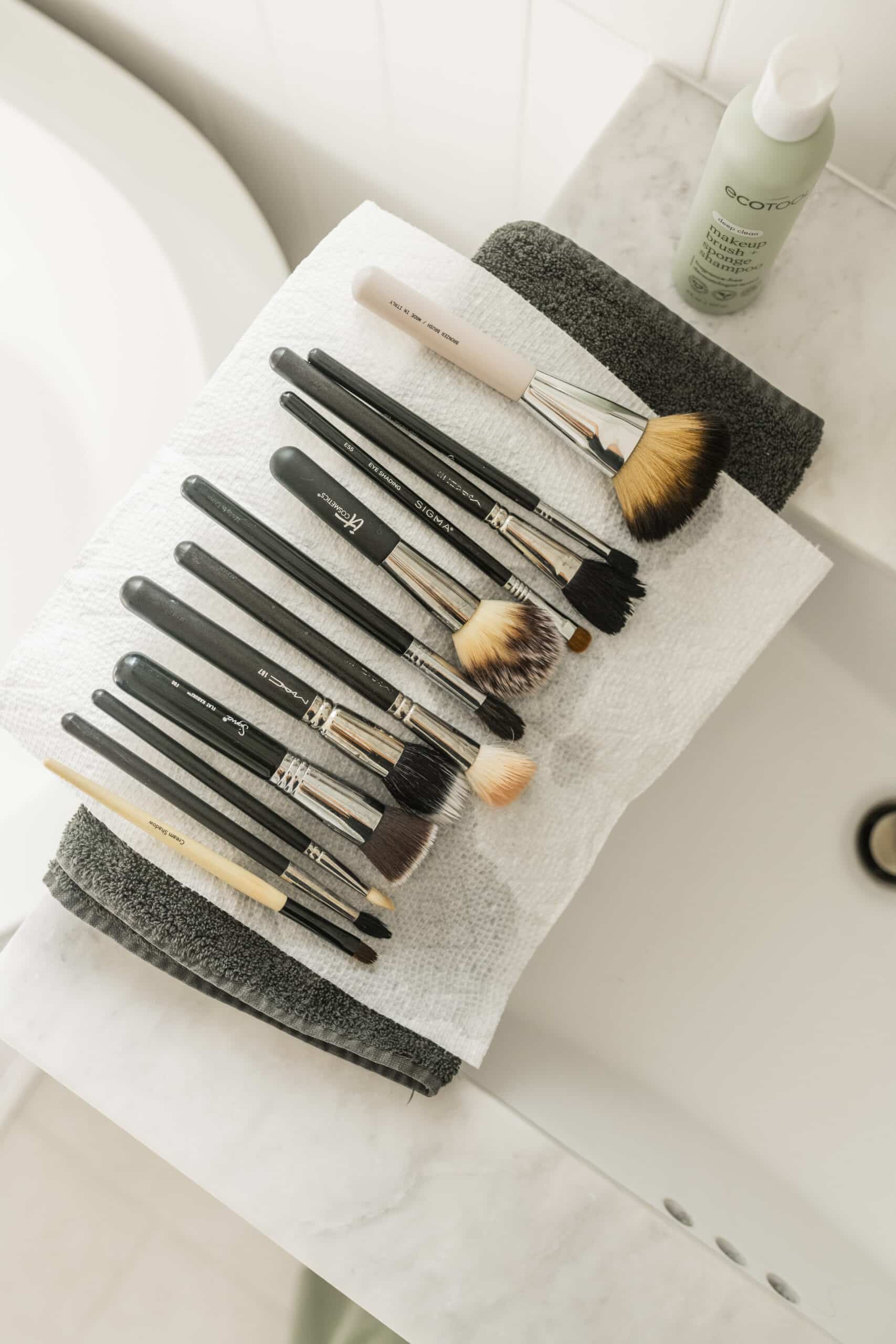

Step 2: Lather and Cleanse
Once your makeup brushes and sponges are wet, it’s time to clean them.
Using a gentle shampoo, facial cleanser or brush cleanser, squirt a bit into the palm of your hand. Swirl each makeup brush tip around massage the bristles for a good lather. Baum also suggests small silicone cleansing mats for a deeper clean.
For makeup sponges, squirt a generous amount of cleanser on the sponge then massage it into the sponge.
Continue to lather your brush tips and sponges until you see makeup colors appearing in the water.
Step 3: Rinse and Repeat
Rinse your makeup brushes and squeeze the water out of your sponges until the water runs clear.
To make sure, you can also run the brush on a paper towel to see if any hidden makeup appears.
Sponges are highly absorbent and brush bristles are intentionally dense to hold makeup, so it’s likely you’ll have to repeat lathering and rinsing them a few times before they’re fully clean. Add more cleanser as you go if necessary.
Step 4: Dry
Once everything is clean, squeeze out any excess moisture from your tools.
PRO TIP: Baum likes to fan out her brush bristles on a paper towel because it helps them dry quicker overnight.
Put a towel down near your sink, with a paper towel on top. If you can, try to fold you towel so that the brushes lay on an angle, with the bristles at the bottom.
Lay your brushes and sponges flat to fully dry on a towel or paper towel.

Step 5: Store
Once everything is completely dry, store your brushes and sponges in a cool, dry place. Never store your brushes when they’re still damp, especially if you keep them in a jar or makeup cup.
Find a place where they have limited contact with other items to prevent further dirt and bacteria while not in use.
Makeup sponges prove to be tricky when storing, and it’s essential that you don’t throw your clean sponge back into a drawer or makeup bag.
Storage solutions for them truly aren’t ideal, but a breathable makeup sponge container like this one is your best option. (Don’t forget to give it a good clean during when you clean your sponge, too.)
